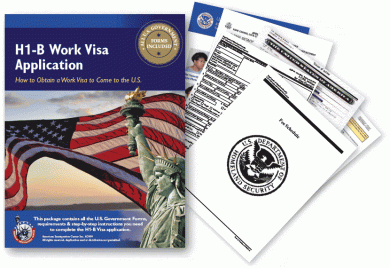H-Visa Season Opening!
As many of you know, the H-1B process has become a lottery. For the past several years, USCIS has received more applications with the first week of availability (First week of April) than they have H-1B visas. This means that they take all applications received and randomly select enough to ensure that they will use up all the H-1Bs. There are approximately 65,000 H-1B visas available under the cap. There are an additional 20,000 made available to those people who have a Master’s Degree or higher from a US institution. Last year, USCIS received over 250,000 applications in that first week.
HOW THE LOTTERY WORKS
USCIS first selected applications that qualify for the additional 20,000 Master’s cap visas. Once those are all used up, all those not selected in that lottery are placed in the lottery for the 65,000 normal H-1Bs. Once that lottery is complete, USCIS send out receipt notices to all those selected and rejection notices to those not selected. USCIS does actually accept more cases than they have visas available. They do this because there is a historical denial rate for the H-1Bs and they want to make sure they use up all, or most, of the H-1Bs available.
WHEN SHOULD I START PREPARING
Since you cannot file the applications until March 31 (to arrive at USCIS on April 1) you may think that you have quite a bit of time. However there are a couple of other considerations to keep in mind. First, you do need to file the Prevailing Wage Request to make sure you are paying the required wage. Currently this is taking about 30-60 days (the DOL website states that they are current, which, according to them, means that it can take up to 60 days to process the request). In addition, a Labor Condition Application must also be filed with the DOL. Those generally are only taking about 2-3 weeks, however occasionally there are errors in DOL information and they are unable to verify the existence of an Employer and require the submission of additional documents. This can extend the process a couple of weeks.
All of a sudden having two months until submission time doesn’t seem like that much time, does it?
WAYS OF MAKING THE PROCESS GO QUICKER
Unfortunately, there really is not anyway of speeding up timelines in this case. About the only way to quicken the process is to file the LCA and perhaps the H-1B application itself prior to receiving the Prevailing Wage request back. For the H-1B USCIS requires the employer to pay the higher of the actual wage (an average of actual wages to people in that position and similar positions at the employer) and the prevailing wage (usually a DOL determined average for that position in that geographical area). The prevailing wage is actually divided into 4 skill levels, level 1 being entry level and level 4 being the highest level for the position. There are many factors that they look at to determine wage level, but for this article the important points are that DOL selects which job title in their database to apply to the given position and which level, regardless of what title and level the employer or their attorney feel is appropriate. While there are methods to appeal their decision, they are not easy and do not always work. Therefore, filing before the Prevailing Wage is determined could mean that you will have to change the wages you are going to pay the employee once it does come back. If the employee has already started working and has already been paid, you may owe back wages as well.
What happens if you do not do the prevailing wage request? If the DOL or USCIS audits your case and comes to the place of employment and reviews the employee file and does not see the prevailing wage request, then they will make a determination as to what the prevailing wage is, and the employer will be responsible for back wages and fines if they are paying less than the prevailing wage. If there is a prevailing wage, it acts as a safe harbor to protect the employer from any fines.
CONCLUSION
We suggest that all those interested in filing H-1Bs start the process as soon as possible. Of course, we do understand that not everyone is in a position to start right now. While there are some ways of making things happen a little quicker, the safest route for the employer is to start preparation as soon as possible.
